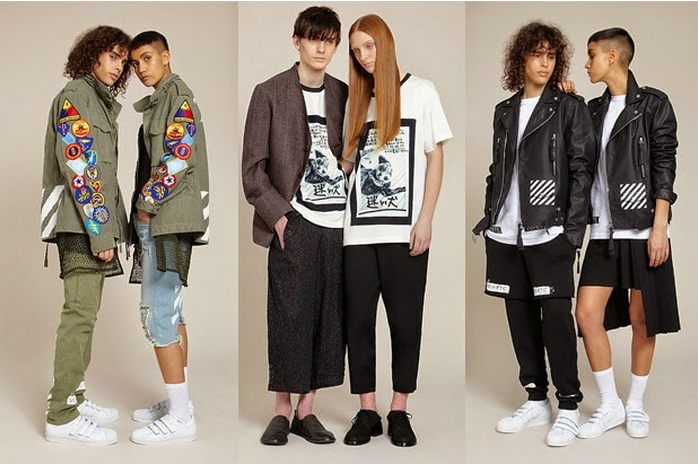
The trending towards gender acceptance could be attributed to Millennials.
Those who are between 18 to 34 are the most tolerant generation to date – in the US, half of the group believes gender exists on a spectrum and shouldn’t be limited to a binary choice of male or female.
This would be unheard of 50 years ago, but with the spotlight on transgender women such as Laverne Cox and Caitlyn Jenner, there’s been a societal shift.
Jenner identified as a man until this year. She became famous as an Olympic athlete during the 1970s and came to prominence most recently as a reality television star.
CivicScience asked a group of just over 1500 US adults if they considered Jenner brave to come out as a woman.
Only a third of the overall applicants answered yes, but when it came to Millennial women, 53 percent said yes.
Millennial men weren’t as supportive, at 33 percent.
NPD account manager Joe Hasek says he’s been keeping up with the trend of genderless retail for a while now.
He says this phenomenon has been seen in high fashion for years on runways.
Of course, Coco Chanel was the original pioneer in the 1920s.
She developed trousers and button-down suits for women at a time where it was unacceptable to be caught in anything other than a dress or skirt.

Image: Marlene Dietrich in a Chanel pantsuit, 1933
Gucci recently launched a menswear collection that challenged traditional binary gender ideals with delicate lace and slouchy bows, worn by both men and women on the runway.

Image: A look from the Gucci menswear collection
Prada didn’t say its Spring 2015 Menswear line was “unisex”, but said it felt “instinctively right to translate the same idea for both genders”.
However, these products are unattainable for a lot of people and not mainstream, Hasek says.
“We’ve yet to see a meaningful trickle-down into any of the typical apparel channels,” he says.
For those who are sticklers for traditional gender roles in clothing, it’s important to note that particular items of clothing have historically not been restricted to one gender.
Both boys and girls wore white dresses as babies in the 19th century, with no pink or blue to be found.
Then in 1918, a department store declared pink was for boys and blue for girls, as pink was considered a stronger colour and blue a more delicate one.
This was swapped around in the 1940s in response to manufacturer and retailer colour interpretations.
High heels were also originally seen as masculine, as heeled footwear was adopted in Persia to help men stay upright in their stirrups while riding horses.
Then, aristocrats used high heels to add a sneaky centimetre or two to their height to communicate their status in the 17th century, and only adopted flat shoes when women picked up on the trend for heels.
There are exceptions, as Hasek says athletic apparel is making progress.
Many athletic clothes that were once just for men are being sported by women.
There is also a lot of progress in the footwear category. Brands like Vans, Converse and Nike have the same style shoe for both sexes.
NPD sports industry analyst Matt Powell says though they’re not specifically marketed as asexual, these are shoes that were once strictly for men, but have become gender neutral.
There have also been changes to the way stores work, like Target.
The retailer is working towards phasing out gender-based signage, after much backlash.
@Target As a father of two young girls, I just wanted to ask: what are “girls” building sets? pic.twitter.com/FJVvOFeKe0
— Jensen Harris (@jensenharris) October 11, 2014
A Twitter user pointed out one of its in store signs and asked why there should be a difference between ‘building sets’ and ‘girls building sets’.
London-based department store Selfridges noticed many of its customers were shopping on the opposite sex’s floor, so it launched an ‘Agender’ pop-up shop.
It describes Agender as: “”a fashion exploration of the masculine, the feminine and the interplay – or the blur – found in between. Moving away from the tradition of a societal – and sartorial – binary gender definition, Selfridges will take its customers on a journey where they can choose to shop and dress without limitations or stereotypes.”

The shop doesn’t divide men and women’s clothing, but instead stocks non-gendered clothing from more than 40 brands across three floors.
Closer to home, Farmers is going to implement gender neutral changing rooms after Auckland transgender personality Mary Haddock-Staniland was called “half woman” by a staff member.
So what can retailers do to get up with the game?
Being understanding of customer needs is a start, as shown by Haddock-Staniland’s experience at Farmers.
The staff member may not have had adequate training to know what to do, but forgetting basic courtesy and empathy is a whole different issue.
As well as this, companies should ensure they treat both genders equally when marketing the same product.
American Apparel learnt this the hard way when marketing a “unisex” shirt.
The men’s photo on the site was a man standing fully clothed in the shirt, while the woman’s photo showed the same shirt styled with a provocative pose and a G-string.
Other photos marketing the shirt included a woman wearing nothing on the bottom whatsoever. The company was branded sexist and degrading.
If companies want to take the matter seriously, there’s Rainbow Tick.
It’s a New Zealand certifying organisation that was founded last year to assist businesses in becoming safe, inclusive places for people of diverse gender identities and sexual orientations.
This article originally appeared on The Register.




